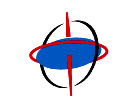


6.5 Signal-to-Noise Ratio Estimation
The signal-to-noise ratio (SNR) for a point source depends on both the Poisson noise of the object, and on noises associated with the background. Sources of background noise include "read noise" of the CCDs, and Poisson noise in the dark current, sky background, and any smooth galaxy light superposed on the target.
| |
Two-Gyro Mode: At some future date HST may be operated with only two gyros, hence causing additional spacecraft jitter and degradation of the effective PSF. While this could potentially degrade the signal-to-noise ratio for point sources, we expect to see very little impact for WFPC2 due to its large pixel sizes. Please see the Two-Gyro Mode Handbook for additional discussion.
|
The SNR obtained for photometry of a point source will depend on the analysis technique used. The optimum SNR will be obtained when the pixels of the point source PSF are weighted in proportion to their expected intensity by PSF fitting. Aperture photometry will tend to give lower SNR, especially for sources where the background is important, but nonetheless is widely used. We now consider both methods.


Space Telescope Science Institute
http://www.stsci.edu
Voice: (410) 338-1082
help@stsci.edu
|



